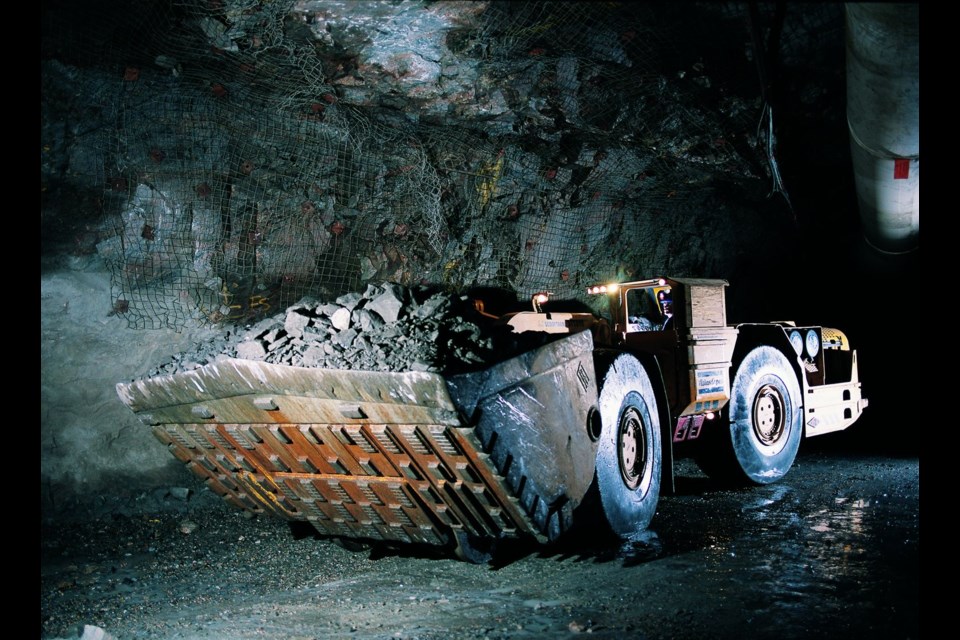“What you get here you don’t get any place else!” Tom White is insistent that the training at NORCAT’s Maley Drive complex is unique. While he acknowledges every customer is different — and could have dissimilar needs — safety really is the key component to every job in mining. Modern training utilizes technology extensively.
On the surface or underground, his methods are not used to increase productivity, but to ensure everyone goes home at the end of the day.
“Effective equipment operator safety training has resulted in significant decreases in injuries. But it is also reflective of a change in how we do training. Look here at these two boxes,” White said, pointing to two Sea-Cans (intermodal shipping containers) housed in the rear section of NORCAT. “We have two of the several hundred simulators in use around the world. Why in Sudbury? We are the mining centre of the world.”
The large standardized shipping steel units can go from warehouse to truck to rail to ship efficiently and securely. The units are portable.
“This one on the left has been to Australia, the US, Europe, and most recently the northern extent of Vancouver Island,” White said. “We can bring training to where it is needed. The interiors of these Sea-Cans have been outfitted, and customized, by ThoroughTec Simulation to fit explicit needs of the mining world.”
Specifications can include custom container sizes, garage doors, man doors, roll-up doors, windows, HVAC, as well as lighting and electrical for the various standards across the globe. They can come with a hefty price tag, but with sound, articulating floors and realistic video responsive to operator instructions, this is no mere video game.
The projectors, the consoles and the controls are all tied to advanced hardware and software. Reports can be generated for each student. White indicates that with a scoop, seven runs in the box gives a good snapshot of what they have learned and how they scored.
Of course, some of the testing includes surprise challenges for learners. This includes a loss of brakes, fire, or hydraulic failure.
“I can work with just about anybody. Send me four trainees for four days and we will generate appropriate paperwork, and master manuals … the full meal deal is the best route to achieve maximum results.“
Key to getting in is that you have to be sent by a contractor or company. Companies send for scoop, bolter, jumbo and truck training.
“The company that is sending you here is putting you on a million-dollar machine. This one on the right is for KGHM, SINO, Vale to share training days. Breaking stuff underground is bad; I try to educate workers also on what equipment can and cannot do, or what the boundaries are,” White said. “I look at this as a stand-alone business that contributes to a larger effort. Beyond the box, the process here at this table is the important piece. Here we talk and examine both good and bad practices.”
For White, the secret to success and preparedness is knowing there is a manual, then knowing the manual from cover to cover.
“You don’t need to memorize the document, but if fully aware of the index, you can rapidly find the answers,” White said. “Startup, fueling, emergency procedures, the manual allows you to turn the key to start up, but are you authorized by the person that is paying you, and are you qualified?
“We have laws on the road for driving highways. We have laws underground outlined and specified in the green book. Some of this unfortunately has been written in blood. While there are standard procedures, I get them 80 per cent of what they need to know, then it takes a career to get you to be a true professional. There is always more to learn.”
White talks about things that happened in his career. “I have seen people, colleagues, friends injured or no longer here. In the big picture, I share awareness so the trainees don’t repeat an error I’ve seen. How many years in industry? 52 years, almost 53. I started at 18 and spent 32 years underground in all kinds of roles. For the last two decades, training has been my world.”
Training, and training equipment, doesn’t come cheap. But regardless of cost, companies are getting a bargain, White said. “Jumbos are a million-five. Training is expensive, but remember not training is even more expensive.”
Hugh Kruzel is a freelance writer in Greater Sudbury.
